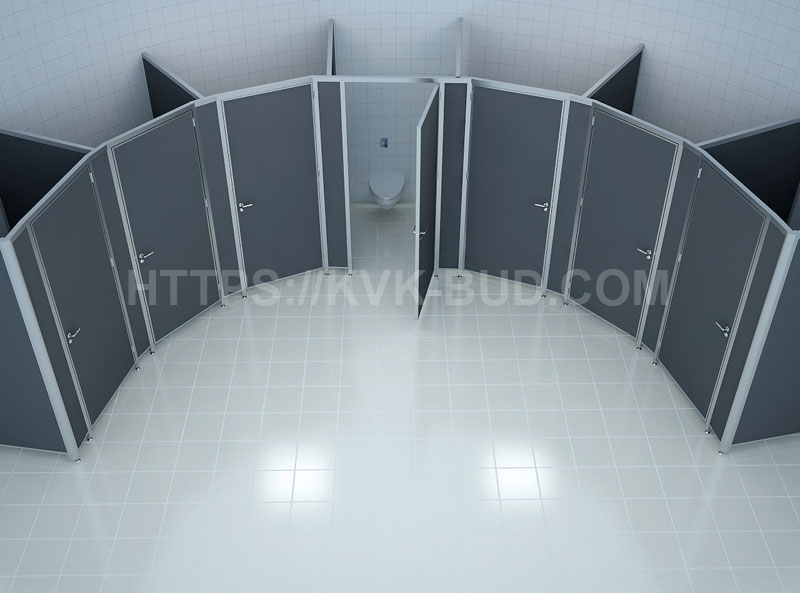
Just a few decades ago, toilet partitions were made of concrete walls or brickwork. Now such materials have already lost their popularity, and almost everyone has abandoned them. Massive structures were replaced by lighter ones – false walls. Thanks to them, it became possible to equip the toilet area as soon as possible and make the sanitary room more attractive. What are they made of, and what caused the choice of this or that material? We’ll figure it out!
Initially, let’s define the most important properties of toilet partitions. Firstly, they must be resistant to moisture, since we are talking about public toilets, where the level of humidity is consistently high. Secondly, their surface must be exposed to different detergents, because they will be washed, as a rule, several times a day.
In this regard, the partitions most often used are made of:
How do they differ, what are the advantages and disadvantages of each material?
You have probably encountered such chipboards. They are produced on the basis of pressed wood shavings, which are impregnated with formaldehyde resins. Melamine foil is used as the top layer. And to make the material stronger, melamine resin is also added to the coating composition. Such a partition will not corrode and will not lose its properties if there is a large amount of moisture in the room.
Among the economy offers, laminated chipboard of 16 or 18 mm thickness is supplied to the market. However, this material has several disadvantages. Plates are not very reliable in operation, it is impossible to install mortise fittings in them due to the small thickness of the panel. Often, to make the partition cheaper, manufacturers apply an edge to the ends of the plates, rather than edging it with an aluminum profile.
Our company presents the Austrian high density chipboard with full edging it with an aluminum profile and adjustable stainless steel legs. These advantages make the materials reliable in operation and extend their useful life.
The abbreviation is made up of the words High Pressure Laminate. The basis for its manufacture is sheets of craft paper impregnated with thermosetting resin. The components are pressed at high pressure and temperature. The resin fills the fibers of the paper and at the molecular level transforms the structure of the material. Our company manufactures toilet partitions from Austrian Egger plates and Italian Abet Laminati plates. These are self-supporting panels of an optimum 12 mm thickness. Other companies offer an economy 10 mm option. But such material is very thin and it is not recommended to use for toilet partitions. Our structures are non-profile, and all fasteners and accessories are made of stainless steel.
Their main advantages:
In addition, pathogenic bacteria do not grow on the surface, which is important for the toilet room. The material has high strength, so it is not so easy to destroy the partition. Among the disadvantages is the rather high cost. And due to the thickness of the panel, it is impossible to use mortise fittings.
Our company does not produce glass partitions, and it should be noted that they are rarely installed in public toilets. However, they, like the previous two materials, have their own advantages. Glass partitions are moisture resistant, they have a high level of hygiene and, most importantly, they have an attractive appearance. Manufacturers offer a choice of products decorated with drawings, engraving, with matte, tinted and glossy glasses. Their main drawback is their high price and low vandal resistance.
What material to choose is up to you. Focus on your budget, the specifics of the room in which they will be installed, and, of course, your personal preferences.
 +38 (097) 903-07-07
+38 (097) 903-07-07